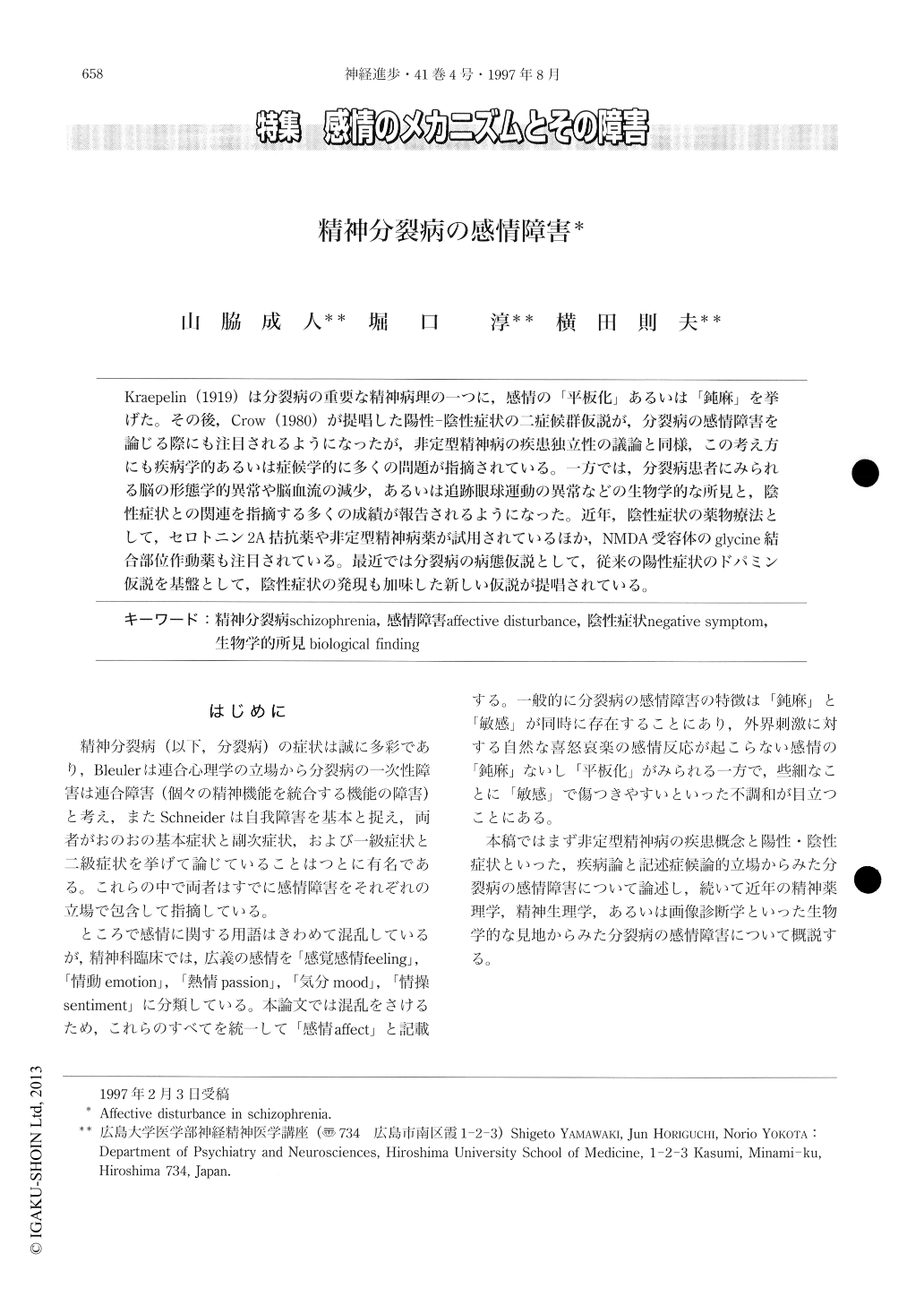Japanese
English
- 有料閲覧
- Abstract 文献概要
- 1ページ目 Look Inside
Kraepelin(1919)は分裂病の重要な精神病理の一つに,感情の「平板化」あるいは「鈍麻」を挙げた。その後,Crow(1980)が提唱した陽性―陰性症状の二症候群仮説が,分裂病の感情障害を論じる際にも注目されるようになったが,非定型精神病の疾患独立性の議論と同様,この考え方にも疾病学的あるいは症候学的に多くの問題が指摘されている。一方では,分裂病患者にみられる脳の形態学的異常や脳血流の減少,あるいは追跡眼球運動の異常などの生物学的な所見と,陰性症状との関連を指摘する多くの成績が報告されるようになった。近年,陰性症状の薬物療法として,セロトニン2A拮抗薬や非定型精神病薬が試用されているほか,NMDA受容体のglycine結合部位作動薬も注目されている。最近では分裂病の病態仮説として,従来の陽性症状のドパミン仮説を基盤として,陰性症状の発現も加味した新しい仮説が提唱されている。
Kraepelin considered affective “flattening” or “blunting” an important element of schizophrenic psychopathology. Bleuler regarded clinical features such as loosening of associations and blunted affect as fundamental, and more transient features such as hallucinations and delusions as accessory. The nature of affective disturbance in schizophrenia, specifically with regard to positive and negative symptoms, has received increasing attention in recent years.

Copyright © 1997, Igaku-Shoin Ltd. All rights reserved.


